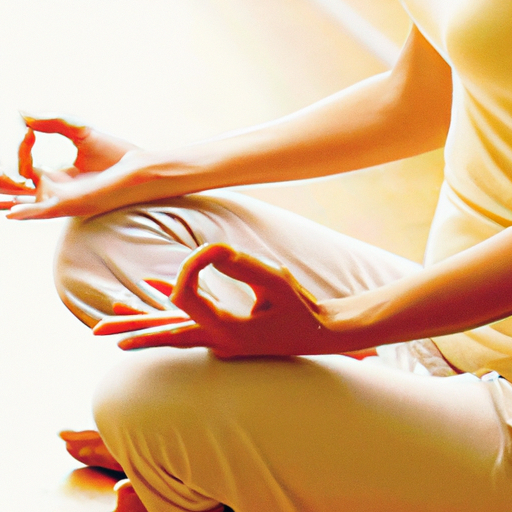
Have you ever wondered what techniques are used in Reiki healing? Well, you’re in for a treat because I’m here to give you all the juicy details! Reiki, a Japanese healing technique, involves the transfer of energy from the practitioner to the recipient. But how exactly does this energy transfer happen? Let’s dive in!
In Reiki healing, practitioners use a variety of techniques to help balance and harmonize the energy within the body. One common technique is called palm healing, where the practitioner places their hands lightly on specific areas of the body, allowing the energy to flow through them and into the recipient. This gentle touch can help alleviate physical pain, promote relaxation, and restore overall wellbeing.
Another technique used in Reiki healing is called scanning. This involves the practitioner moving their hands over the recipient’s body, feeling for any imbalances or blockages in the energy flow. By identifying these areas, the practitioner can then focus the energy to help clear and heal them. It’s like a little energetic detective work!
But wait, there’s more! In Reiki healing, practitioners can also use visualization techniques to enhance the healing process. They may imagine a flow of bright, healing light entering the body and dissolving any negative energy or blockages. This visualization helps to amplify the power of the energy transfer and promotes deep healing within the recipient.
These are just a few of the techniques used in Reiki healing. In my upcoming article, you’ll learn even more about this fascinating practice and how it can benefit your overall wellbeing. So stay tuned and get ready to unlock the secrets of Reiki healing!
Introduction to Reiki Healing
Reiki healing is a spiritual practice that utilizes universal life energy to promote well-being and balance in the body, mind, and spirit. It is based on the belief that energy flows through all living beings and can be channeled by a trained practitioner. In this article, we will explore the various techniques used in Reiki healing and how they contribute to the overall healing process.
Understanding the concept of Reiki healing
At its core, Reiki healing is based on the principle that energy can be channeled to promote physical, emotional, and spiritual healing. This energy, often referred to as life force energy or chi, flows through the body in specific pathways known as meridians. The practitioner acts as a channel, directing this energy to areas of the body that require healing.

Exploring the history of Reiki healing
Reiki healing originated in Japan in the early 20th century and was developed by Mikao Usui. Usui believed that everyone has the ability to connect with and channel universal life energy. He created a system of hand positions and symbols to facilitate the flow of this energy for healing purposes. Today, Reiki healing is practiced worldwide and has evolved into various forms and lineages.
Principles of Reiki healing
Before delving into the techniques used in Reiki healing, it is important to understand the fundamental principles that guide this practice. These principles, known as the Five Reiki Principles or Precepts, serve as a moral and spiritual compass for practitioners. They are:
- Just for today, I will not be angry.
- Just for today, I will not worry.
- Just for today, I will be grateful.
- Just for today, I will do my work honestly.
- Just for today, I will be kind to every living thing.
The principles encourage mindfulness, gratitude, and compassion, creating a foundation for healing and personal growth.

Hand Positions in Reiki Healing
One of the primary techniques used in Reiki healing involves the placement of hands on or near the body. The practitioner follows a specific sequence of hand positions, which correspond to the major energy centers in the body, known as chakras. By placing their hands on these areas, the practitioner can activate the flow of energy and promote healing.
Each hand position is held for a few minutes, allowing the energy to be absorbed and balanced. The hands may also be intuitively guided to areas of the body that require additional attention. This hands-on approach creates a sense of comfort and relaxation for the recipient, allowing them to enter a state of deep healing.
Channeling Energy in Reiki Healing
The practice of channeling energy is a key aspect of Reiki healing. The practitioner acts as a conduit, allowing universal life energy to flow through them and into the recipient. This energy is not directed by the practitioner’s personal will but rather by the guidance of a higher power.
To channel energy effectively, the practitioner must be attuned to the Reiki symbols and mantras. These sacred symbols and mantras are used as tools to connect with the universal energy and enhance the healing process. By visualizing or vocalizing these symbols and mantras, the practitioner can direct and amplify the flow of energy.
Symbols and Mantras in Reiki Healing
Symbols and mantras play a significant role in Reiki healing. They are ancient and sacred tools that have been passed down through generations of Reiki practitioners. Each symbol and mantra holds a specific purpose and vibration, contributing to the overall healing experience.
The symbols are visual representations that can be used to focus energy and promote specific outcomes. They may be drawn with the hands or visualized in the mind’s eye. The mantras, on the other hand, are sacred sounds or words that are repeated either silently or aloud. They generate vibrations that resonate with the universal energy and facilitate healing.
Aura Cleansing in Reiki Healing
In addition to working with the physical body, Reiki healing also addresses the energy field surrounding it, known as the aura. The aura consists of multiple layers and is a reflection of a person’s physical, emotional, and spiritual state.
During an aura cleansing, the practitioner uses their hands to gently move through the recipient’s energy field, removing any energetic blockages or stagnation. This process helps to restore balance and flow within the aura, promoting overall well-being.
Distance Healing in Reiki
One unique aspect of Reiki healing is its ability to be practiced remotely or at a distance. Distance healing involves sending healing energy to someone who is not physically present. This can be done through focused intention and the use of Reiki symbols and mantras.
The practitioner visualizes the recipient and channels Reiki energy across time and space to the intended recipient. Distance healing can be just as effective as in-person sessions, providing healing and support to those who may not be able to be physically present.
Chakra Healing in Reiki
Chakra healing is another technique used in Reiki healing. The body is believed to have seven main chakras, which are spinning wheels of energy located along the central axis of the body. Each chakra corresponds to different aspects of our being, including physical, emotional, and spiritual elements.
Through specific hand positions and the use of symbols and mantras, the practitioner can balance and energize the chakras. This promotes the free flow of energy throughout the body, enhancing overall well-being.
Crystals and Reiki Healing
Crystals and gemstones are often used in conjunction with Reiki healing to amplify the healing effects. Each crystal possesses unique energetic properties that can support specific intentions and healing goals.
During a Reiki session, crystals may be placed on or around the recipient’s body to enhance the flow of energy and promote balance. They can also be held by the practitioner to channel specific vibrations.
Conclusion
In conclusion, Reiki healing utilizes a variety of techniques to promote physical, emotional, and spiritual well-being. From the placement of hands and channeling of energy to the use of symbols, mantras, and crystals, each technique serves a specific purpose in the overall healing process. By connecting with universal life energy, Reiki healing offers a holistic and transformative approach to healing and personal growth.










